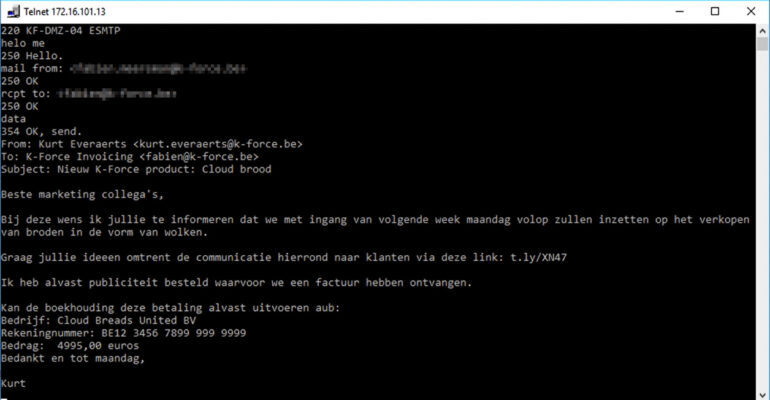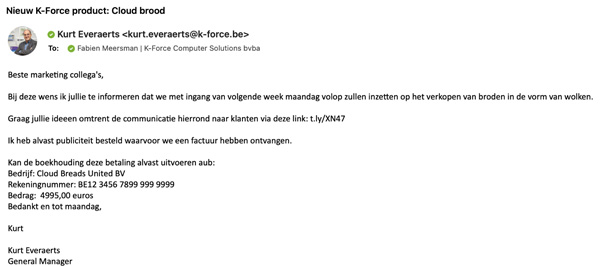Misleading emails with fake payment requests in circulation

Misleading emails with fake payment requests in circulation
Unfortunately, we have to inform you again about a wave of rogue emails.
This time it’s mainly about an increase in very well-crafted spam e-mails asking for payments with fake bank account numbers or incorrect amounts.
Of course, as an IT partner, we are constantly monitoring the security within our environments, but it goes without saying that e-mails still slip through the net. K-Force continues to adjust security settings, but because hackers are increasingly using social engineering, and the fact that a lot of people work from home (often outside the security of the company), it is not possible to counter everything. It is also very difficult for a program such as Outlook to determine whether a particular supplier is legitimate and to provide the correct payment details in an email. At the bottom of this communication you can find a fun example that we have prepared ourselves for illustration.
Our message in this communication is twofold: we want to inform you about the current wave of emails to increase alertness and we want to advise you to introduce an internal validation procedure regarding payments. Some simple suggestions:
- Check with the colleague who placed the order whether the payment request is correct (correct amount, goods, payment details). Especially when a new or unknown supplier sends a payment request.
- Has a supplier changed payment details? Call them to check whether this information is correct.
Finally, we refer to a video with more general tips about phishing e-mails that we published earlier: click here.
Also know that you can take out insurance to a certain extent against possible losses as a result of hacking (for example, not checking a supplier’s account number is not covered). For this we work together with our partner Akses & Smismans and will send out a separate communication about this very shortly.
Do you still have questions or doubts? K-Force will of course remain accessible through the known channels.
helpdesk@k-force.be – 02 380 23 32.
An example

The result:





